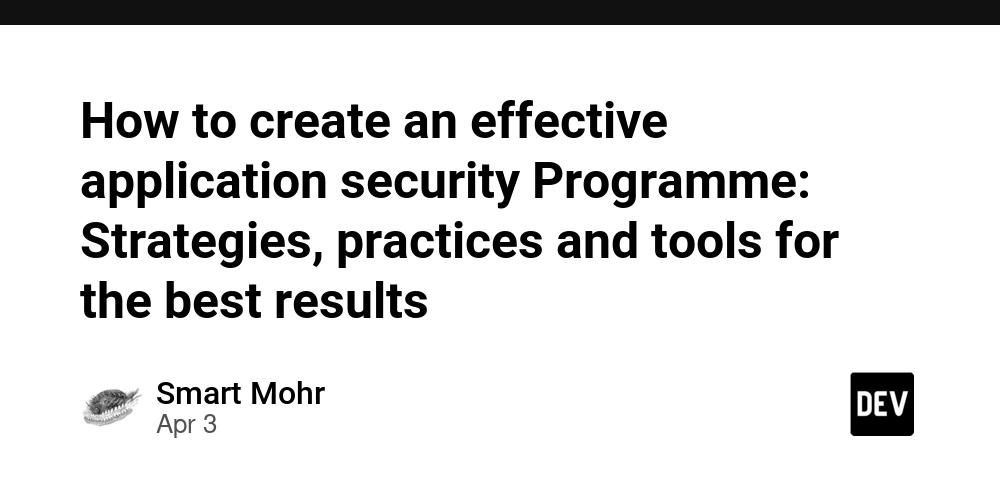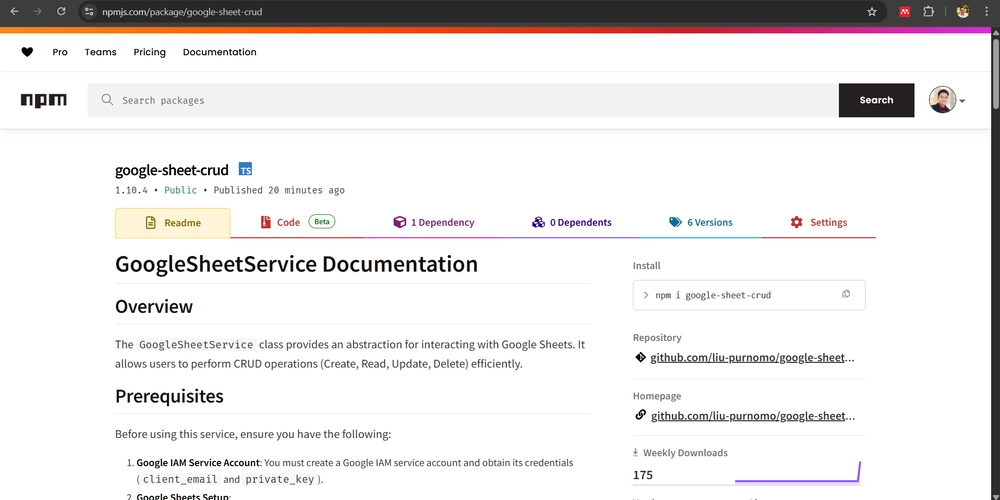How to create an effective application security Programme: Strategies, practices and tools for the best results
Navigating the complexities of contemporary software development requires a thorough, multi-faceted approach to security of applications (AppSec) that goes far beyond just vulnerability scanning and remediation. A systematic, comprehensive approach is required to incorporate security into all stages of development. The constantly evolving threat landscape and the ever-growing complexity of software architectures are driving the need for a proactive, holistic approach. This comprehensive guide outlines the essential elements, best practices, and the latest technology to support an efficient AppSec programme. It empowers companies to enhance their software assets, mitigate risks, and establish a secure culture. At the heart of the success of an AppSec program is a fundamental shift in thinking, one that recognizes security as an integral aspect of the development process, rather than an afterthought or a separate undertaking. This paradigm shift requires a close collaboration between developers, security, operations, and the rest of the personnel. It breaks down silos and fosters a sense shared responsibility, and encourages collaboration in the security of applications that are created, deployed, or maintain. DevSecOps helps organizations incorporate security into their processes for development. This means that security is addressed throughout the process, from ideation, design, and deployment until the ongoing maintenance. A key element of this collaboration is the formulation of specific security policies that include standards, guidelines, and policies which establish a foundation for safe coding practices, vulnerability modeling, and threat management. The policies must be based on industry standard practices, including the OWASP Top Ten, NIST guidelines and the CWE (Common Weakness Enumeration) as well as taking into account the unique demands and risk profiles of the particular application and the business context. These policies should be codified and made accessible to everyone in order for organizations to have a uniform, standardized security strategy across their entire application portfolio. security assessment platform To make these policies operational and to make them applicable for development teams, it's essential to invest in comprehensive security education and training programs. The goal of these initiatives is to equip developers with expertise and knowledge required to write secure code, spot potential vulnerabilities, and adopt best practices in security throughout the development process. The training should cover a broad range of topics including secure coding methods and the most common attack vectors, to threat modelling and design for secure architecture principles. Through fostering a culture of continuing education and providing developers with the tools and resources they require to implement security into their daily work, companies can establish a strong foundation for an effective AppSec program. Security testing is a must for organizations. and verification processes in addition to training to spot and fix vulnerabilities before they can be exploited. This requires a multi-layered approach that encompasses both static and dynamic analysis methods along with manual penetration testing and code review. The development phase is in its early phases static Application Security Testing tools (SAST) are a great tool to discover vulnerabilities like SQL Injection, Cross-Site Scripting (XSS) and buffer overflows. Dynamic Application Security Testing (DAST) tools on the other hand can be utilized to simulate attacks against running applications, while detecting vulnerabilities which aren't detectable by static analysis alone. While these automated testing tools are necessary to identify potential vulnerabilities at large scale, they're not an all-purpose solution. manual penetration testing performed by security experts is crucial to uncovering complex business logic-related vulnerabilities that automated tools could overlook. Combining automated testing and manual verification allows companies to obtain a full understanding of the application security posture. They can also prioritize remediation activities based on level of vulnerability and the impact it has on. To enhance the efficiency of an AppSec program, businesses should take into consideration leveraging advanced technology like artificial intelligence (AI) and machine learning (ML) to enhance their security testing and vulnerability management capabilities. AI-powered tools are able look over large amounts of application and code data and detect patterns and anomalies which may indicate security issues. These tools can also learn from vulnerabilities in the past and attack techniques, continuously improving their ability to detect and prevent emerging security threats. ai in application security One of the most promising applications of AI within AppSec is the use of code property graphs (CPGs) that can faci

Navigating the complexities of contemporary software development requires a thorough, multi-faceted approach to security of applications (AppSec) that goes far beyond just vulnerability scanning and remediation. A systematic, comprehensive approach is required to incorporate security into all stages of development. The constantly evolving threat landscape and the ever-growing complexity of software architectures are driving the need for a proactive, holistic approach. This comprehensive guide outlines the essential elements, best practices, and the latest technology to support an efficient AppSec programme. It empowers companies to enhance their software assets, mitigate risks, and establish a secure culture.
At the heart of the success of an AppSec program is a fundamental shift in thinking, one that recognizes security as an integral aspect of the development process, rather than an afterthought or a separate undertaking. This paradigm shift requires a close collaboration between developers, security, operations, and the rest of the personnel. It breaks down silos and fosters a sense shared responsibility, and encourages collaboration in the security of applications that are created, deployed, or maintain. DevSecOps helps organizations incorporate security into their processes for development. This means that security is addressed throughout the process, from ideation, design, and deployment until the ongoing maintenance.
A key element of this collaboration is the formulation of specific security policies that include standards, guidelines, and policies which establish a foundation for safe coding practices, vulnerability modeling, and threat management. The policies must be based on industry standard practices, including the OWASP Top Ten, NIST guidelines and the CWE (Common Weakness Enumeration) as well as taking into account the unique demands and risk profiles of the particular application and the business context. These policies should be codified and made accessible to everyone in order for organizations to have a uniform, standardized security strategy across their entire application portfolio.
security assessment platform To make these policies operational and to make them applicable for development teams, it's essential to invest in comprehensive security education and training programs. The goal of these initiatives is to equip developers with expertise and knowledge required to write secure code, spot potential vulnerabilities, and adopt best practices in security throughout the development process. The training should cover a broad range of topics including secure coding methods and the most common attack vectors, to threat modelling and design for secure architecture principles. Through fostering a culture of continuing education and providing developers with the tools and resources they require to implement security into their daily work, companies can establish a strong foundation for an effective AppSec program.
Security testing is a must for organizations. and verification processes in addition to training to spot and fix vulnerabilities before they can be exploited. This requires a multi-layered approach that encompasses both static and dynamic analysis methods along with manual penetration testing and code review. The development phase is in its early phases static Application Security Testing tools (SAST) are a great tool to discover vulnerabilities like SQL Injection, Cross-Site Scripting (XSS) and buffer overflows. Dynamic Application Security Testing (DAST) tools on the other hand can be utilized to simulate attacks against running applications, while detecting vulnerabilities which aren't detectable by static analysis alone.
While these automated testing tools are necessary to identify potential vulnerabilities at large scale, they're not an all-purpose solution. manual penetration testing performed by security experts is crucial to uncovering complex business logic-related vulnerabilities that automated tools could overlook. Combining automated testing and manual verification allows companies to obtain a full understanding of the application security posture. They can also prioritize remediation activities based on level of vulnerability and the impact it has on.
To enhance the efficiency of an AppSec program, businesses should take into consideration leveraging advanced technology like artificial intelligence (AI) and machine learning (ML) to enhance their security testing and vulnerability management capabilities. AI-powered tools are able look over large amounts of application and code data and detect patterns and anomalies which may indicate security issues. These tools can also learn from vulnerabilities in the past and attack techniques, continuously improving their ability to detect and prevent emerging security threats.
ai in application security One of the most promising applications of AI within AppSec is the use of code property graphs (CPGs) that can facilitate more accurate and efficient vulnerability detection and remediation. CPGs are a rich representation of an application’s codebase that not only shows the syntactic structure of the application but also complex dependencies and relationships between components. AI-driven software that makes use of CPGs can provide an analysis that is context-aware and deep of the security of an application, and identify security holes that could be missed by traditional static analysis.
Additionally, CPGs can enable automated vulnerability remediation with the use of AI-powered code transformation and repair techniques. By understanding the semantic structure of the code and the characteristics of the weaknesses, AI algorithms can generate targeted, specific fixes to tackle the root of the issue, rather than simply treating symptoms. This approach does not just speed up the removal process but also decreases the possibility of breaking functionality, or creating new security vulnerabilities.
Another crucial aspect of an efficient AppSec program is the incorporation of security testing and validation into the ongoing integration and continuous deployment (CI/CD) pipeline. Through automated security checks and embedding them into the process of building and deployment organizations can detect vulnerabilities in the early stages and prevent them from entering production environments. This shift-left approach to security allows for quicker feedback loops and reduces the amount of effort and time required to discover and rectify issues.
To reach this level, they should invest in the proper tools and infrastructure to help support their AppSec programs. This includes not only the security testing tools themselves but also the platform and frameworks which allow seamless automation and integration. Containerization technology like Docker and Kubernetes play a significant role in this regard, since they provide a reproducible and constant environment for security testing as well as separating vulnerable components.
Effective tools for collaboration and communication are just as important as a technical tool for establishing an environment of safety, and enable teams to work effectively together. Issue tracking tools such as Jira or GitLab will help teams focus on and manage vulnerabilities, while chat and messaging tools such as Slack or Microsoft Teams can facilitate real-time collaboration and sharing of information between security specialists and development teams.
The achievement of the success of an AppSec program is not solely on the tools and techniques employed, but also on the process and people that are behind the program. To build a culture of security, you require an unwavering commitment to leadership with clear communication and a dedication to continuous improvement. Organizations can foster an environment in which security is more than a tool to mark, but an integral aspect of growth through fostering a shared sense of accountability engaging in dialogue and collaboration offering resources and support and encouraging a sense that security is an obligation shared by all.
To ensure the longevity of their AppSec program, organizations must concentrate on establishing relevant measures and key performance indicators (KPIs) to monitor their progress as well as identify areas to improve. These indicators should cover the entire lifecycle of applications including the amount of vulnerabilities discovered in the development phase to the time it takes to correct the issues and the security posture of production applications. code validation platform These indicators can be used to demonstrate the benefits of AppSec investments, detect trends and patterns and assist organizations in making informed decisions regarding where to focus on their efforts.
To keep pace with the ever-changing threat landscape, as well as the latest best practices, companies must continue to pursue education and training. This could include attending industry conferences, participating in online training programs as well as collaborating with security experts from outside and researchers to keep abreast of the latest technologies and trends. By cultivating an ongoing education culture, organizations can ensure their AppSec programs are flexible and robust to the latest challenges and threats.
It is vital to remember that application security is a continual process that requires constant commitment and investment. As new technologies are developed and development practices evolve organisations must continuously review and modify their AppSec strategies to ensure that they remain relevant and in line with their goals for business. By adopting a continuous improvement mindset, encouraging collaboration and communication, and making use of cutting-edge technologies like CPGs and AI businesses can design an efficient and flexible AppSec program that does not only safeguard their software assets, but also let them innovate within an ever-changing digital landscape.
security assessment platform






















































.jpg)
%20Abstract%20Background%20112024%20SOURCE%20Amazon.jpg)



















































































































![[The AI Show Episode 142]: ChatGPT’s New Image Generator, Studio Ghibli Craze and Backlash, Gemini 2.5, OpenAI Academy, 4o Updates, Vibe Marketing & xAI Acquires X](https://www.marketingaiinstitute.com/hubfs/ep%20142%20cover.png)
































































































































![From drop-out to software architect with Jason Lengstorf [Podcast #167]](https://cdn.hashnode.com/res/hashnode/image/upload/v1743796461357/f3d19cd7-e6f5-4d7c-8bfc-eb974bc8da68.png?#)





































































































.png?#)





.jpg?#)
































_Christophe_Coat_Alamy.jpg?#)











































































































![Rapidus in Talks With Apple as It Accelerates Toward 2nm Chip Production [Report]](https://www.iclarified.com/images/news/96937/96937/96937-640.jpg)









































































































































